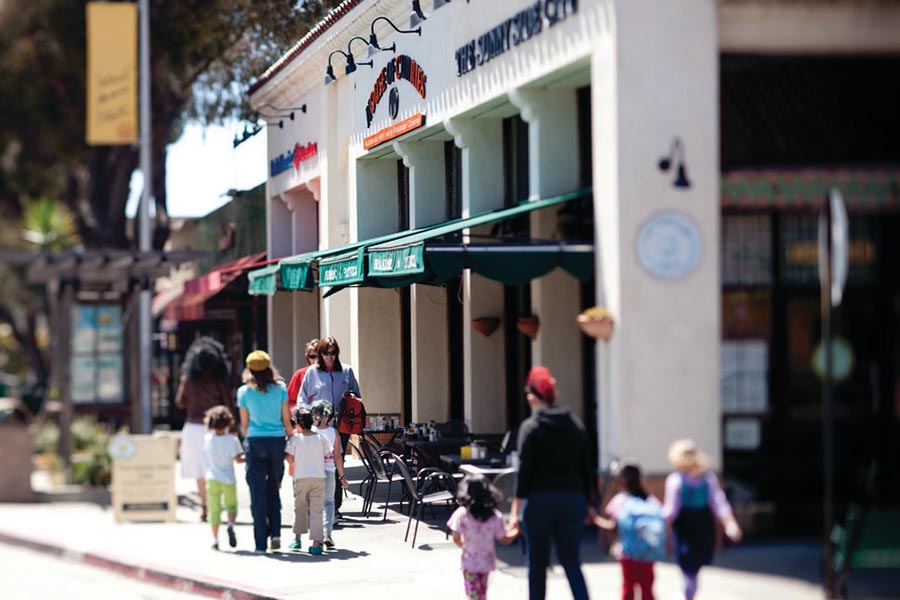 Everyone knows the saying when it comes to shopping for real estate: location, location, location! But, what does that really mean? And what does a desirable neighborhood really encompass to you? We’ve put together a high-level list of things to consider when plotting the location of your next home.
Everyone knows the saying when it comes to shopping for real estate: location, location, location! But, what does that really mean? And what does a desirable neighborhood really encompass to you? We’ve put together a high-level list of things to consider when plotting the location of your next home.
Commute
Everyone has heard stories about friends and family who travel two hours each way to work. A study conducted by Canada’s University of Waterloo (via Forbes) found that people with the longest commutes have the lowest overall satisfaction with life. In 2014, it took the average American worker 26 minutes to travel to work, according to the U.S. Census Bureau. According to Vital Signs/Metropolitan Transportation Commission, the average Bay Area commute was 30 minutes in 2014, and that has likely risen with the influx of jobs and people over the last few years. Thus, Bay Area neighborhoods with access to BART and other public-transportation options are perennially popular with homebuyers.
When considering a new house and neighborhood, make sure to think about what your future commute will look like. The popular career website Glassdoor offers some variables to consider when thinking about the “soft” costs of commuting.
Noise
Airports, highways, commuter trains, and emergency vehicles are all necessary — and all produce a fair amount of noise. Is your dream home right next to a major freeway interchange or near an airport? Expect there to be some noise. Visit the neighborhood at different times of the day to get a feeling for the level and consistency. Once you live in the house, the noise will be yours to deal with; make sure you are prepared.
If you do land on a noisy street, Apartment Therapy offers some ways to cope. Besides your own comfort levels in terms of living with noise, what about the resale value of a “loud” house? Finance website DQYDJ.com actually offers a way to calculate the loss of value based on decibels.
Schools
It’s no secret that highly rated schools affect real estate values and can make buying in a neighborhood significantly more competitive. To check on neighborhood school ratings, some parents use GreatSchools.org, which offers test scores, parent reviews, and even comparisons with nearby schools. The K-12 school search site Niche also allows parents to explore school ratings and statistics for public and private schools.
Parks and Recreation
Playgrounds, swimming pools, karate classes, social clubs, activities for older adults, dog parks … what is there to do in the neighborhood? Are there interesting activities for you and your children (and pets), or will you have to head to a different part of town for the majority of your recreation time? Drive around the neighborhood and note parks and playgrounds. Search online to see what kind of activities nearby recreation centers offer. The California Department of Parks and Recreation’s website has a searchable map for nearby state parks and other open spaces
Restaurants/Bars/Culture
Does your dream neighborhood bustle with pedestrians, restaurants, and businesses, or do you want something a little more removed from the action? You may find a home that hits all of your checklist items — except it’s right next to a bar. That probably won’t work for you if you’re in bed at 9 p.m. and need peace and quiet. The vibe of the neighborhood is very important and should match your tastes and lifestyle. You don’t want to find yourself in a suburban home if you really want to be part of a vibrant downtown scene on a daily basis, and vice versa.
Shopping
Access to grocery stories, pharmacies, and the like may not seem to be deal-breakers, but it’s a good idea to have some knowledge about nearby shopping options. How far away is the nearest convenience store? Is having a mall close by important to you? There will be times when you will need to run to the store for an essential, so keep that in mind when narrowing down your ideal neighborhood.
Architecture
Is a neighborhood full of Queen Anne homes when a Mid-century modern aesthetic is more your thing? Does the neighborhood offer mixed housing styles, with apartments and condos as well as single-family homes?
Spend a few hours walking around the neighborhood. By getting our of your car, you’ll get a much better and more authentic feel of the neighborhood and its individual style, and you’ll have more time to study the homes in the area. To some homebuyers, aesthetics are very important, and being in an area that pleases them visually is of the upmost importance. To learn more about various architectural styles that are common in the Bay Area, check out a series of original articles published in our blog’s Consumer Advice section.
So how can you learn even more about a neighborhood short of stalking your potential new neighbors? Realtor.com offers a variety of resources in one place that can help you get to know a neighborhood better. And of course, there is no better resource than an experienced real estate professional with in-depth, hyperlocal knowledge of individual neighborhoods.

